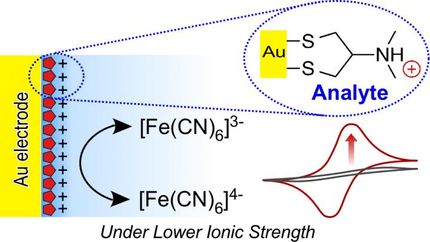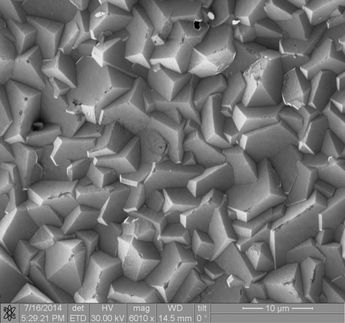Toward a test strip for detecting TNT and other explosives in water
Scientists described development of a new explosives detector that can sense small amounts of TNT and other common explosives in liquids instantly with a sensitivity that rivals bomb-sniffing dogs, the current gold standard in protecting the public from terrorist bombs. They reported on the technology, suitable for incorporation into a TNT test strip, at the 243rdNational Meeting & Exposition of the American Chemical Society (ACS).
The sensor also has potential uses in detecting water pollution involving TNT, according to Yu Lei, Ph.D., and Ying Wang, who developed the sensor. Such contamination can occur from production, obsolete storage facilities and other sources. TNT contamination of drinking water carries a risk of serious health disorders.
Wang, a graduate student in Lei's laboratory at the University of Connecticut, said there has been a long-standing need for a fast, simple, accurate way to detect so-called "nitroaromatic compounds" in salt water, fresh water and other liquids. That family of compounds includes 2,4,6-trinitrotoluene — TNT — which is so widely used in construction, agriculture and military applications that it has become the standard for measuring explosive force, even for nuclear weapons.
"Law enforcement or homeland security officials concerned about the presence of TNT in a harbor at docks need an answer quickly so they can take steps to protect people and property," Wang pointed out. "That's not easy with traditional testing methods."
Those tests involve taking a sample of water and shipping it to a full-scale laboratory. The sample must be concentrated because water currents dilute the explosive, leaving only minute amounts in the sample. And water samples must be prepared in other ways before analysis with expensive laboratory instruments.
"Our new sensor promises to provide answers on-the-scene almost immediately," Wang added, noting that it is based on a color change that occurs when a sensing molecule in the device attaches to an explosive. Lei explained that the device can detect very small amounts of TNT, as well as larger amounts. The broad sensing range, high sensitivity and dual action make this new sensor unique among those that work on water-based samples, he noted.
So far, Lei and Wang have been able to detect concentrations of explosives, such as TNT, ranging from about 33 parts per trillion (equivalent to one drop in 20 Olympic-sized swimming pools) to 225 parts per million.
Lei and Wang explained that the sensor is already easy to use, but they plan to make it even more user-friendly by incorporating it into a paper strip, similar to the test strips used to test for pregnancy. That way, an explosives expert or airport screener would simply dip the filter paper into a sample of ocean water or other liquid, and put that filter paper into a machine that would read the fluorescence and detect the presence of explosives in real time. The sensor also could be used to detect TNT that leaches into the environment, in streams or rivers near munitions testing sites and manufacturing facilities.
Other news from the department science
These products might interest you
Most read news
More news from our other portals
See the theme worlds for related content
Topic world Sensor technology
Sensor technology has revolutionized the chemical industry by providing accurate, timely and reliable data across a wide range of processes. From monitoring critical parameters in production lines to early detection of potential malfunctions or hazards, sensors are the silent sentinels that ensure quality, efficiency and safety.

Topic world Sensor technology
Sensor technology has revolutionized the chemical industry by providing accurate, timely and reliable data across a wide range of processes. From monitoring critical parameters in production lines to early detection of potential malfunctions or hazards, sensors are the silent sentinels that ensure quality, efficiency and safety.

































































